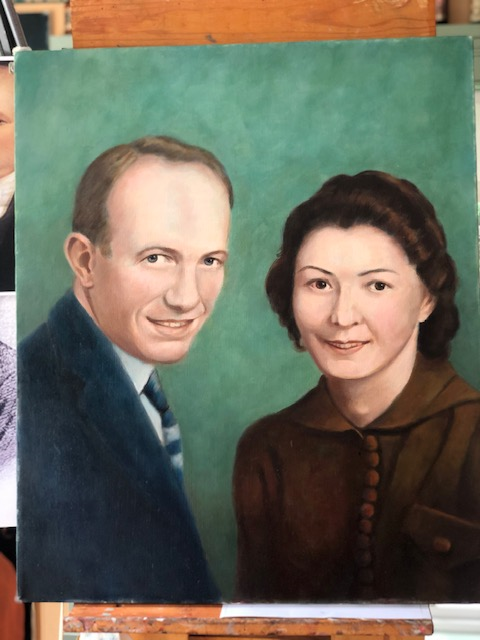
Philip Parr ’62 ’65 recently shared his story of how he became a painter.
Engineer-Painter
When you become a engineer, you learn an ancient saying: “A good engineer knows what he knows, and knows what he doesn’t know.” It sounds frivolous, but you will soon become acquainted with fellows who think they know every thing about everything. You learn to give their views careful scrutiny.
When I was a teenager, I was interested in baseball and jazz. It was soon apparent I couldn’t hit, throw, or field, So baseball was “out.” I asked my mother if I could have piano lessons. I wanted to be another Teddy Wilson or Dave Brubeck. Well I failed at that too. Of course I continued to listen to jazz. I bought the village’s first reel-to reel tape recorder, and copied jazz from the radio. After we moved to the Rochester area I attended Dixieland and barbershop quartet concerts.
I had a subscription to “True the Men’s Magazine.” I enjoyed reading articles about national history. I also like the color-covers, usually a copy of a famous painting which added something to the text. Especially I liked the paintings of “local” artist, Frederick Remington (Oswego).
Dad was a history teacher, and I would accompany him on local “field trips,” bringing my tape recorder if we were to interview someone.
For Christmas (when I was about fifteen) my parents bought me a “paint-by-number” set. I painted the first example well-enough, but the second example was much better. There was left-over paint, so I decided to copy a Remington cover painting. It was really quite nice, and our daughter now owns the piece.
So, I was on my way. I knew what I could do, and what I could not do.
When I was seventeen Dad “cornered” me. “What do you plan to do to make a living? I said I hadn’t thought much about it. He said. “You better think now, for next year you will have to apply to colleges. Do you want my opinion? I said “of course.” “Well, I see that you are interested in history, but if you make history your profession, you will have to teach, and you will end-up as poor as I am. You are also interested in art, but it is even more difficult to make a living in painting pictures. My advise is to become an engineer, for which you have an aptitude, and keep history and art as you hobbies.
I took Dad’s advice. I applied to a half-dozen schools, and it was more-or-less a tie between Syracuse and Clarkson. I asked him for advice. He said “Do you see yourself as a big city boy or a small town boy?” “Small town,” I said. “In that case go to Clarkson in Potsdam.”
This was the best decision of my life. I met my wife (SUNY Potsdam music student.) I decided to work for Eastman Kodak (30 years), and returned to Clarkson for a Masters Degree. All the while I studied history (you should see my book cases) and I painted. We had a yearly pass to the Rochester Philharmonic, and I painted many of the musicians. I also painted of our friends, and gave them the result.
I mostly taught myself to paint, but I had lessons from two prominent local painters: John Peisley and Stan Gordon. Mainly I used art books to get tips. After I retired, I got a some-times job where I restored damaged paintings, and painted portraits for a fee.
Now I am painting family portraits (if General Clarkson doesn’t get in the way).
Philip Parr ’62 ’65
